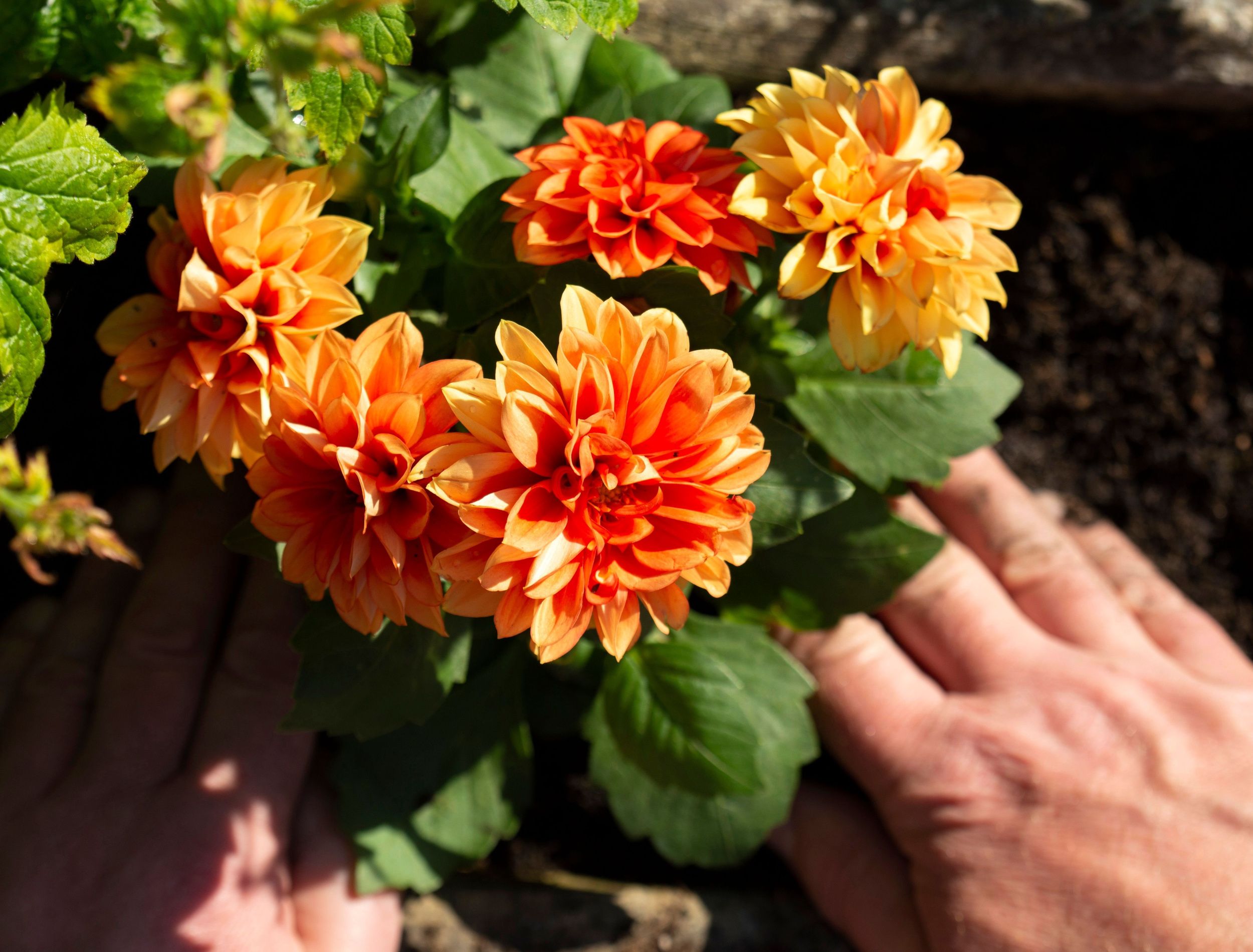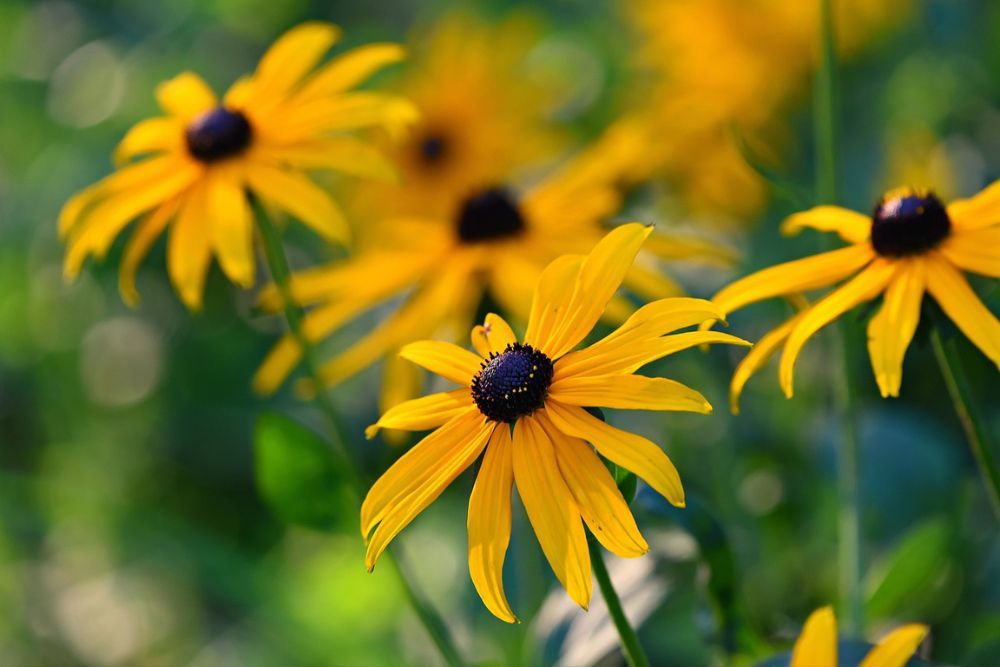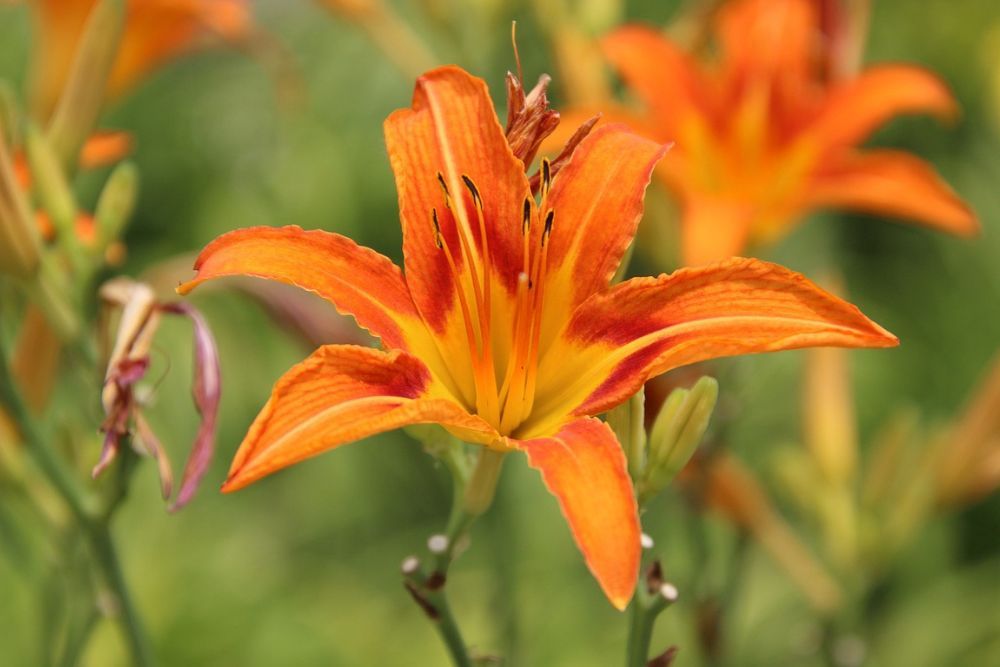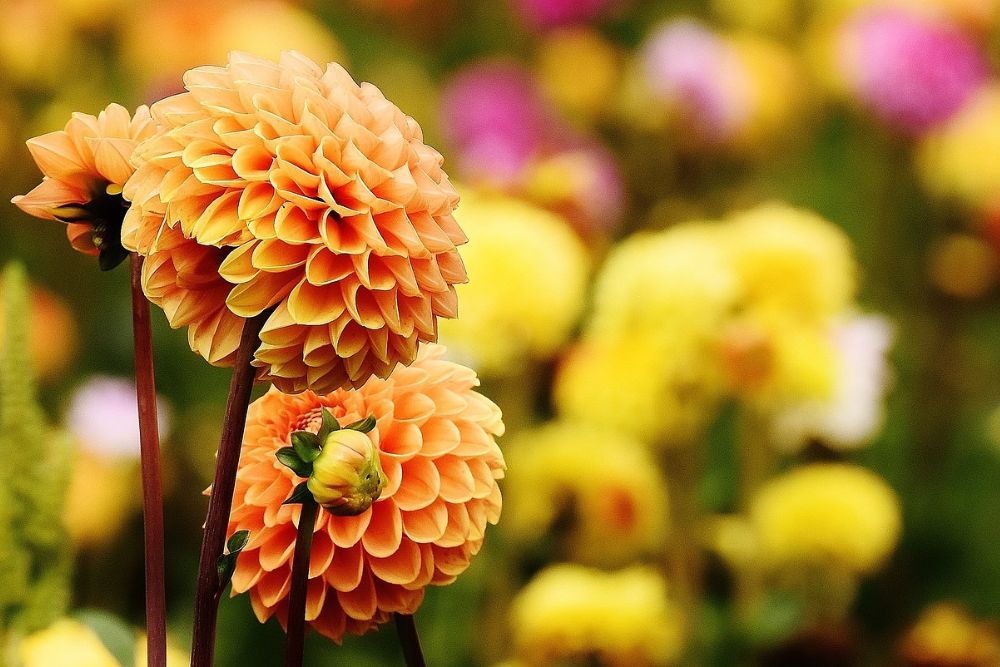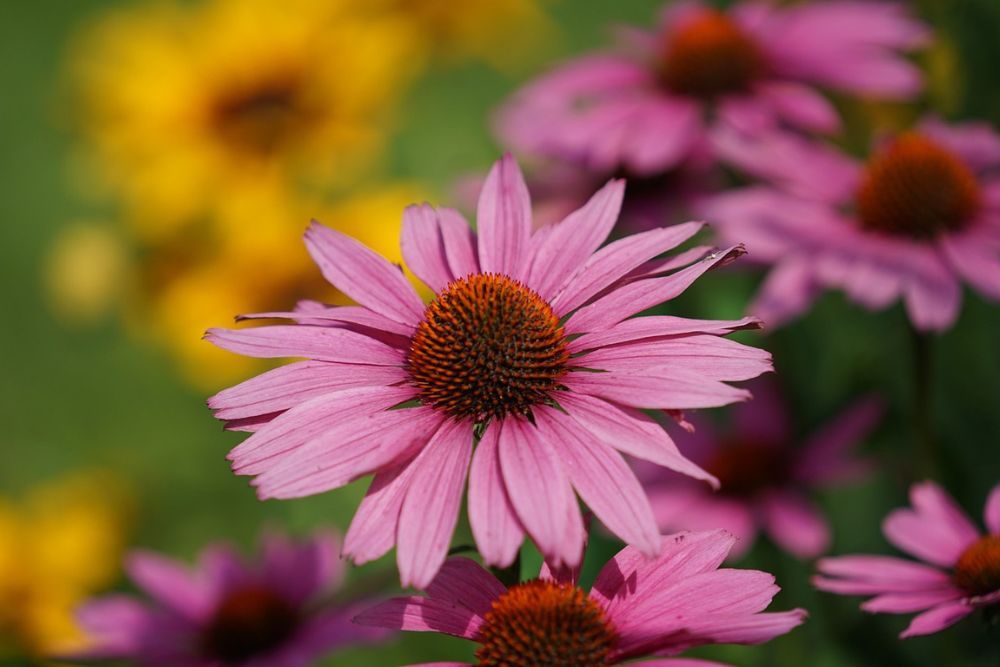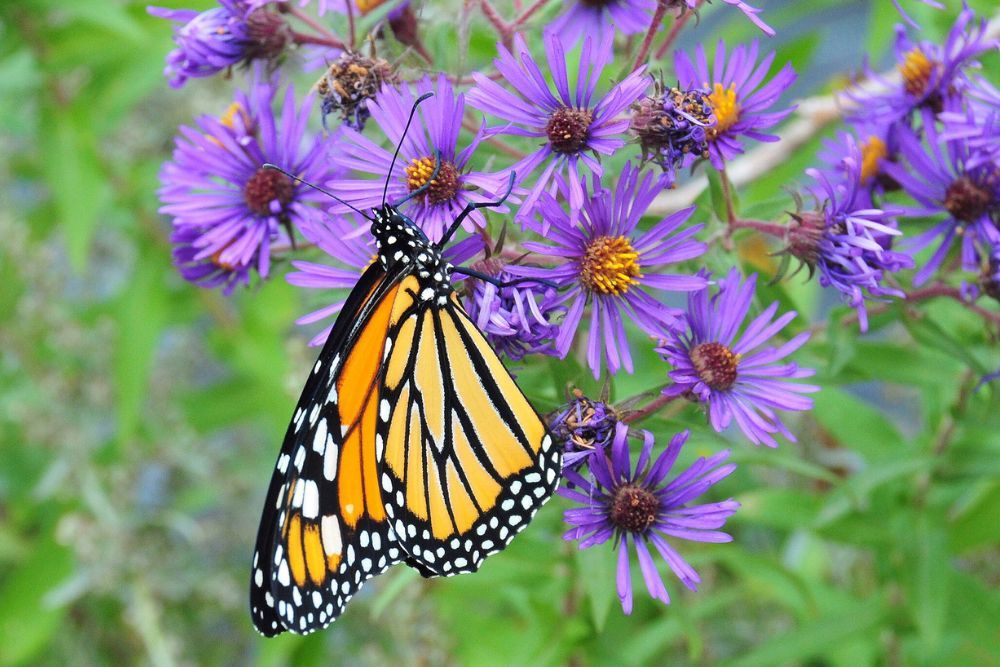A colorful array of flowers can elevate your garden in late summer. Summer starts in mid-June, usually around June 20 or 21, and the first day of fall arrives on September 22 or 23. So, when you plant a stunning selection of late-summer flowers, you can enjoy vibrant blooms from August through mid-September!
By planting late summer perennials in particular, you can also look forward to blossoms in future years. In contrast to annual plants, which typically only flower for one year, perennials generally bloom year after year. When cultivating perennials, you create a garden you can enjoy for many summers to come!
1. 'Greenland Shark' Daylily
'Greenland Shark' daylilies (Hemerocallis 'Greenland Shark') produce rich burgundy flowers with white frilly edges resembling shark teeth. This type of perennial daylily thrives in zones 3 to 9, in full sun or partial shade, and generally blossoms with large, showy flowers up to 6½ inches. Start watching for the blooms in mid-season during May and June, then watch for late summer flowers around August.
Typically, the daylily season begins in March and April. This is when 'extra early' cultivars like 'Happy Returns' bloom. Then it lasts until 'very late' when cultivars such as 'Autumn Accent' flower in September through October.
2. Black-Eyed Susans
Black-eyed Susans (Rudbeckia hirta) can infuse your garden with a beautiful golden-yellow blanket of bloom from late spring to late summer (May through August). You can help extend their blooming season into the fall by deadheading or using pruning shears to remove flower heads when they fade. They are drought-tolerant, enjoy two to six hours of sun daily, and grow well in zones 3 to 9.
Saving 'Short-Lived' Black-Eyed Susan Seeds
Some black-eyed Susan cultivars, like 'Cappuccino,' are less reliable as perennials and might not come back each year. Look for descriptions like "short-lived perennial" on the seed packet to determine if your cultivar is less likely to bloom next year. Then, adjust your gardening plan by collecting and sowing the seeds your flower produces so that you can enjoy their beautiful colors every year.
To collect seeds, first watch for the seed heads at the top of the plant to brown, then remove them. Next, place them in a jar or plastic bag to shake the seeds out. Then, sow your seeds on the surface of the soil around six weeks before the autumn frost for flowers next year!
To enjoy Black-eyed Susans' elegant yellow blooms well into autumn, look for late-blooming cultivars like 'Indian Summer,' which blooms during late summer and late autumn. Alternatively, enjoy blooms earlier with a perennial cultivar like 'Cappuccino' for flowers in June until the first fall frost.
3. Orange or Tiger Daylily
Orange daylilies (Hemerocallis fulva) can bring a bright and zesty sea of coral to your garden with their large 5-inch blooms that flower in mid to late summer (July and August). They also have many names, including tiger daylily, ditch lily, and tawny daylily. Typically, this type of lily grows best in zones 3 to 9, with two to six hours of sun a day, and also attracts butterflies making it an excellent choice for a pollinator garden.
It is important to note that this kind of lily may be invasive in your region because it can rapidly spread in meadows and wetlands, competing with local ecosystems. Research your region before planting, or consider cultivating your lily in a container to control its rhizomes (underground roots and stems) from growing wildly in your garden bed and taking over.
All parts of lilies and daylilies are toxic to cats, including stems, flowers, and foliage. So it is best to keep pets away from lily gardens.
4. Dahlia
Dahlias (Dahlia spp.) are showstopping flowers that bloom in various hues like burnt orange, rich cardinal red, and fuchsia pink from the middle of summer until autumn. For best results, cultivate them in a flower garden with two to six hours of sunlight, and plant tubers 3 inches deep in the soil when the soil reaches 60 degrees Fahrenheit. After planting, you can expect flowers about two months later. So if you plant tubers in early June, watch for flowers in early August.
Remember that although they grow well in zones 6 to 11, they are only perennial in zones 8 to 11. If you are cultivating dahlias in a cooler region, dig up the tubers (underground roots) every autumn after the first frost and plant them again next year.
To store dahlia tubers for next year, wait until the leaves turn black and die after the first autumn frost. Then, cut the foliage back to about 2 to 4 inches above the ground, and dig out the tubers using a trowel. Dry them in the sun and store them for the winter in a dry, cool area like your basement that stays between 40 and 50 degrees Fahrenheit.
5. Coneflowers or Echinacea
Coneflowers (Echinacea spp.) are cheerful perennials that love full sun and tolerate partial shade. There is a wide range of cultivars, such as 'Bravado' with petals in pastel pink, 'Springbrook's Crimson Star' with radiant red blossoms, and 'Finale White' with delicate white flowers. Generally, coneflowers are hardy perennials in zones 3 to 9 and tolerate drought well, making them a top option for a xeriscape garden.
Keep an eye out for blooms in the middle of summer from June until September. If you prefer blossoms in autumn instead of midsummer, take out your sharp scissors or pruning shears. Then remove up to 1 foot off the top of the plant when you see flower buds forming. Next, place cut flowers in a bouquet or vase to uplift your home while you wait for your fall flower garden.
6. New England Asters
New England Asters (Symphyotrichum novae-angliae) grow in zones 4 to 8 and offer stunning lavender blooms towards the end of summer from August until November. These perennials are a superb way to attract pollinators like butterflies and bees to your garden. They enjoy full sunlight but can tolerate partial shade.
It is best to sow seeds ⅝ inch deep in the autumn so that they naturally receive cold stratification. Cold stratification is when cold temperatures promote germination. If you forgot to plant seeds in the fall, you can mimic this process with your fridge. Place your seeds in a container or bag and tuck them in the refrigerator for about three months before you plant them in spring.
Make a Splash With Stunning Late-Summer Blooms
Elevate your garden with stunning late-summer perennials that bloom in August and September. Consider unique blooms like 'Greenland Shark' daylilies to add a pop of color and elegant frilly petals, black-eyed Susans for a golden blanket of warm summer colors, or New England asters for delicate purple blossoms that pollinators love. Remember that some perennials are better suited to certain zones, so if you opt for a showstopper like dahlias, they are only perennial in zones 8 to 11.
What are your favorite late-summer flowers? Share your top picks in the comments below!

